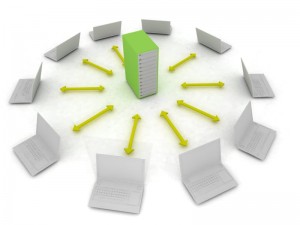For many small and mid-size businesses (SMBs), an upgrade to software means unboxing bright, shiny new PCs and laptops for workers. But once the costs are big matters to companies these days, they have to rethink everything.
Besides basic desktop choices, SMBs may also look to explore new ways to provide and manage desktop computing in general. To that end, desktop virtualization, a set of technologies that change the way desktop software is accessed by employees and managed by IT administrators, is getting serious consideration.

One flavor of this technology is called virtual desktop infrastructure (VDI). The virtual desktop technology allows businesses to host desktops from a central server room or data center. Like server virtualization, with which many SMBs are familiar, multiple PC operating systems are concentrated onto a few servers as virtual machines, which end-users access over the network. Each virtual PC is the exact working environment they would find if the operating system were running on physical hardware on the user's desks. According to a Yankee Group survey released in March 2009, 41% of SMBs are experimenting with virtual desktop technology.
The big name in virtualization and application delivery is Citrix. Citrix XenDesktop offers an array of features targeted at making virtual desktop deployments more economically feasible, reliable and productive. This system can scale up from a small group of workers to tens of thousands of users.
The centralized model of virtual desktop technology allows IT administrators to make upgrades and patches to a core Windows OS image, and then replicate this image out to the company, instead of having to patch scores of individual machines. At the same time, Citrix also offers features that allow end users to enjoy customized PC experiences, just as if they had actual physical PCs or laptops running in front of them.
The benefits of virtual desktop technology can include the following:
- Lighter client: Companies can procure smaller, simpler, easier to maintain (and often somewhat less expensive) client devices, or they can extend the life of existing equipment, since hardware requirements for the virtual desktop client are generally much lower than requirements for traditional desktops.
- Reduced application licensing fees: Virtual desktop technology positions organizations to move away from having to over-license products; rather, the required number of licenses can be purchased and made available where and as needed, with a cap on maximum consecutive uses to ensure adherence to the scaled down licensing. This can result in significantly reduced licensing requirements, and significant savings.
- More flexible application rollout: Upgrade or roll out applications on the virtual desktop servers, and they can be available to all clients who need them. No more visiting each workstation to perform upgrades, or “pushing” upgrades and installs out to hundreds of end points.
- Enhance remote access capabilities: This technology makes it possible to let remote users access applications that are centrally hosted. This can make it much easier to provide remote employees access to applications without requiring them to purchase and install the applications on their computers, and without requiring your support team to help troubleshoot these remote applications.
Want to know more about the outstanding features of desktop virtualization technology? Download Citrix XenDesktop brochure now to discover.
References: Forbes and Emergingedtech
 English
English  Vietnamese
Vietnamese 

